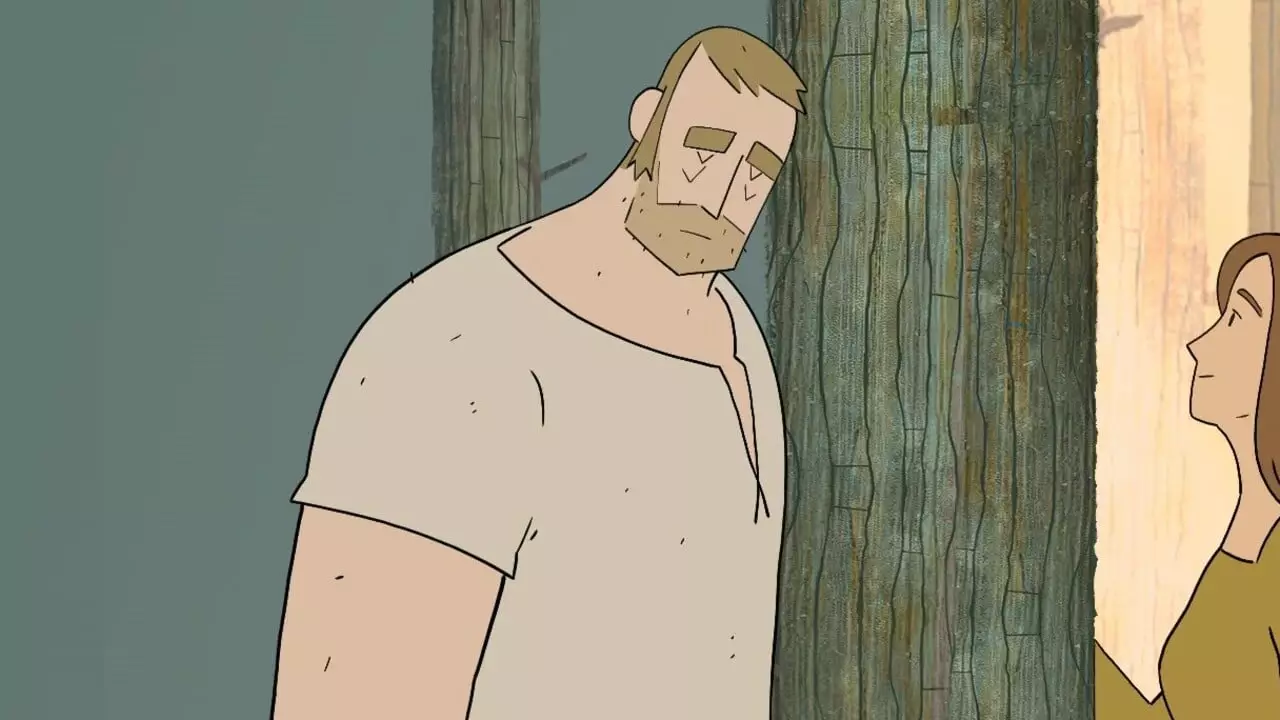A simple word like ‘game’ typically conjures images of joy, engagement, and a hint of competitive spirit. However, when considering video games like Pine, the term takes on a more complex meaning. Pine eloquently intertwines gameplay with themes of loss, inviting players on a poignant journey. Unlike many video games that thrive on fast-paced excitement and adrenaline, Pine adopts a more somber, contemplative approach that engages the player in a unique exploration of grief and solitude.
Pine’s mechanics prioritize a gentle, almost meditative interaction style that might be off-putting for some gamers accustomed to more dynamic gameplay. The main character is a solitary figure who toils in a forest, performing mundane tasks like chopping wood and cultivating a vegetable patch. The controls utilize either touchscreen gestures or a controller, but neither feels particularly engaging or immersive. Touchscreen interactions require players to mimic actions such as swinging an axe or harvesting vegetables, yet this approach feels repetitive and, at times, tedious.
Contrarily, using a controller reduces these experiences into simplistic button presses, stripping away the tactile connection intended by the developers. While this design choice aligns with the protagonist’s monotonous life, it might also frustrate those seeking the thrill of conventional gaming mechanics. As players engage with Pine, it becomes apparent that the game is less about challenging gameplay and more about instilling a sense of existence through repetitive tasks—a stark contrast to the typically exhilarating nature of video games.
Despite its gameplay limitations, Pine compensates with stunning visuals and a hauntingly beautiful soundtrack. The visual artistry of the game captures the essence of the forest, creating a backdrop that feels alive yet eerily still, echoing the protagonist’s internal struggle. Each scene boasts a poignant simplicity that effectively renders the character’s isolation. The colors, textures, and art style work in conjunction to draw players into this realm of solitude and reflection.
Accompanying these visuals, the sound design plays an essential role in amplifying the atmosphere. The music oscillates between soft melodies and somber tones, reflecting the character’s painful journey through mourning. It encapsulates a sense of nostalgia and longing, creating an immersive environment that resonates emotionally with players.
Pine’s narrative serves as a meditation on grief, portraying an individual fighting through the fog of sorrow. The game fosters an introspective experience where players are compelled to confront the meaning of loss—and perhaps also the urgency of moving forward. While some may find comfort in its depiction of melancholic resilience, others may perceive a disconnection. The journey within Pine, spanning a couple of hours, can feel drawn out, mirroring the timeless and often stagnant nature of grief itself.
This emotional exploration may not resonate with everyone. For some, the game may feel like a tedious exercise, the sad undertones overshadowing any moments of insight. As players advance, the interactions become increasingly passive, resembling a film-like experience rather than an actively engaging game. This shift raises questions about the thin line between contemplating existence and merely existing.
Final Thoughts: A Polarizing Experience
Pine undoubtedly occupies a unique niche within the video game landscape—one that straddles the lines between artistry, psychology, and interactive storytelling. While it showcases striking visuals and a haunting soundtrack, its gameplay may leave certain players yearning for depth and excitement. The game forces an emotional introspection that may not appeal to a broader audience. For those willing to delve into its themes of loss and resilience, Pine can be a meaningful, albeit subdued, exploration of grief. Alternatively, it may simply come across as the bleakest of gardening simulators, leaving some players disengaged.
Pine is a reflection of what it means to navigate through sorrow and existence—a game that, while slow and simple, offers high emotional stakes for those ready to engage with its poignant narrative. Whether this journey resonates with players will largely depend on their willingness to reflect on their own experiences with loss and the various ways it can shape life.

